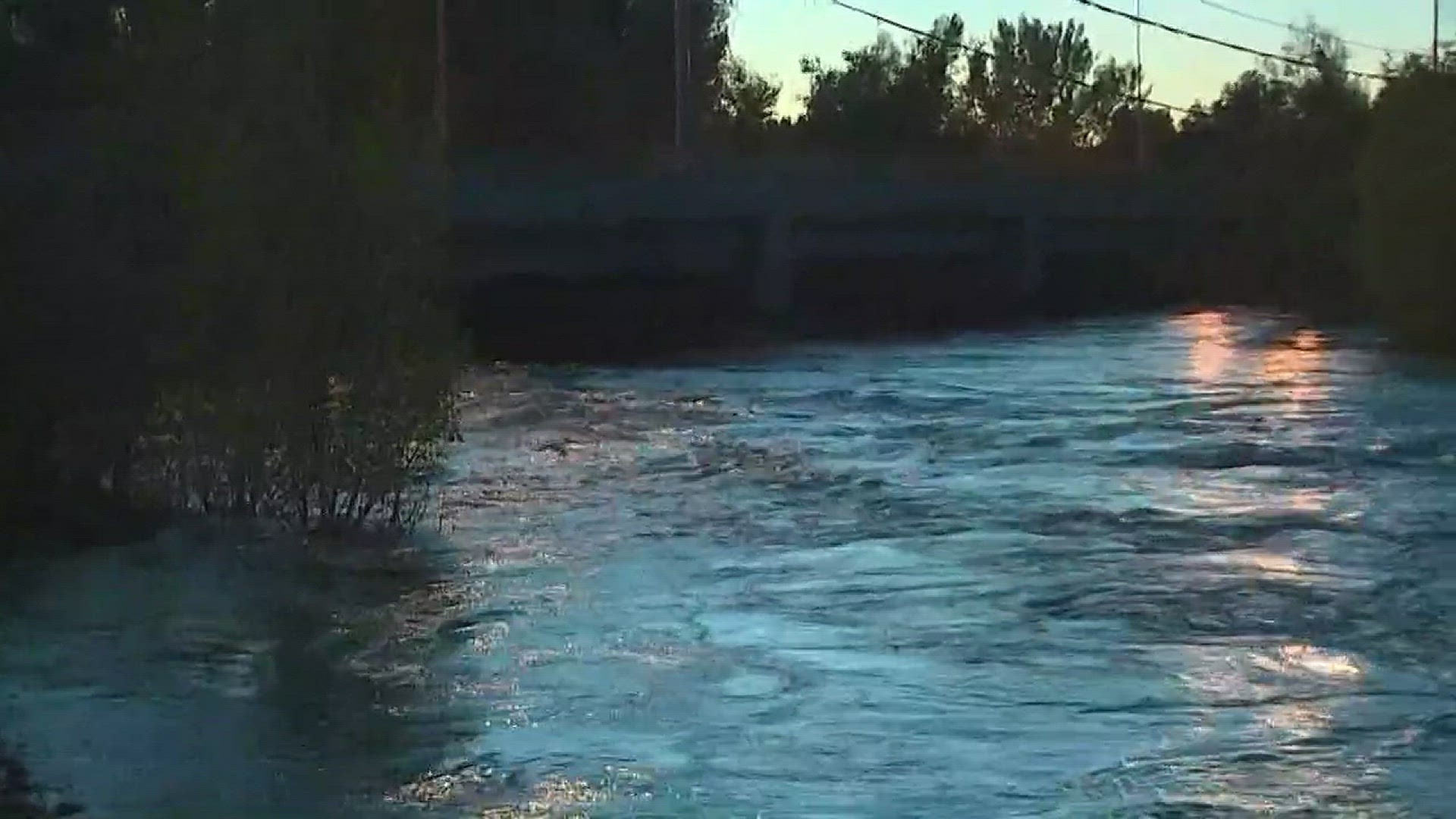BOISE -- The Boise River is expected to drop even more on Wednesday, bringing water back down closer to non-damaging flood stage, to a level we haven't seen since early March.
With that, you will likely start to see the reservoirs evening out, but remaining very full. The snowpack in the higher elevations is finally running out, so you are currently seeing flows through the Treasure Valley falling and the reservoirs maintaining space.
Water managers say the reservoir system may get a bit fuller as they cut outflows, but system inflows will be less than they have been recently.
As of late Tuesday evening, the Boise River was measured around 8,200 cubic feet per second (cfs). By 7 p.m. Wednesday night, the Army Corps of Engineers says the water should be reduced to about 7,200 cfs. They will be reducing water out of Lucky Peak in two increments throughout the morning.
After rushing above flood stage for months, water managers say they are hopefully getting the river back into its banks in a few days. The Boise River and all of us downstream from the dams will be getting some relief thanks to less runoff in the mountains and a drop in stream flows into the Boise River reservoir system (Anderson Ranch, Arrowrock, Lucky Peak).
"Most of the snow has gone, melted in just high elevation snowpack. The last few days we've been actually increasing the amount of space in the reservoir system," Bureau of Reclamation water operations manager, Brian Sauer, said.
As of Tuesday night, the Boise River reservoir system was at 96 percent capacity with about 40,000 acre-feet of the nearly 950,000 acre-feet available; most of that space is in Lucky Peak.
"That's the last line of defense, the lowest reservoir in the system," Army Corps of Engineers Walla Walla District's Hydrology and Hydraulics Branch Chief John Heitstuman told KTVB. "The only appreciable space remaining is in Lucky Peak and that's normal because you want the lowers reservoir in the system to have the most space."
Over the last few weeks, many KTVB viewers have been asking us why the Boise River was still so high while Lucky Peak wasn't at full capacity. The explanation is that water managers had to clear the way for the rest of the abundant, above-normal snowpack still left to melt.
"It's a timing thing really," Sauer added. "We knew that we were going to need the space in Lucky Peak eventually and we've used up a lot of that space."
"After we had the huge snowpack increase in February, we were playing catch-up most of the spring," Sauer said. "We did what we needed to do always keeping in mind we want to use the minimum amount of water flows and still keep everybody safe."
At this point, the Bureau of Reclamation says in partnership with the the Army Corps of Engineers, they are releasing more water than what is coming into the reservoir system (Boise River gage below Lucky Peak Dam is currently a little above 11,000 cfs.) But the New York Canal and other irrigation canals are taking quite a bit of water away from the river flows.
Soon, as we get below flood stage, water managers say levels will start to balance out, with Lucky Peak filling for recreation and Arrowrock and Anderson Ranch eventually topping off.
"We can always bring the water down from Arrowrock and Anderson Ranch into Lucky Peak. But once it's in Lucky Peak the only place for it to go is out," Sauer added.
Sauer says the dams are designed to fill under full control - when inflows are lower and when the Boise River gets out of flood stage.
He says we will probably see the river reach below flood stage sometime next week - which is 7,000 cfs. But water managers have to be cautious as they reduce flows; they can't take water away too quickly because over-saturated trees and eroding banks could fall into the river.
"The big reductions can only occur until we get down to flood stage," Heitstuman added.

